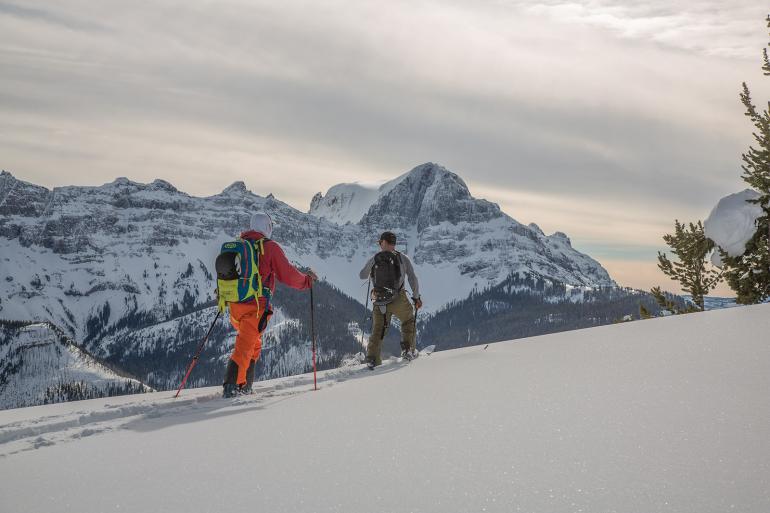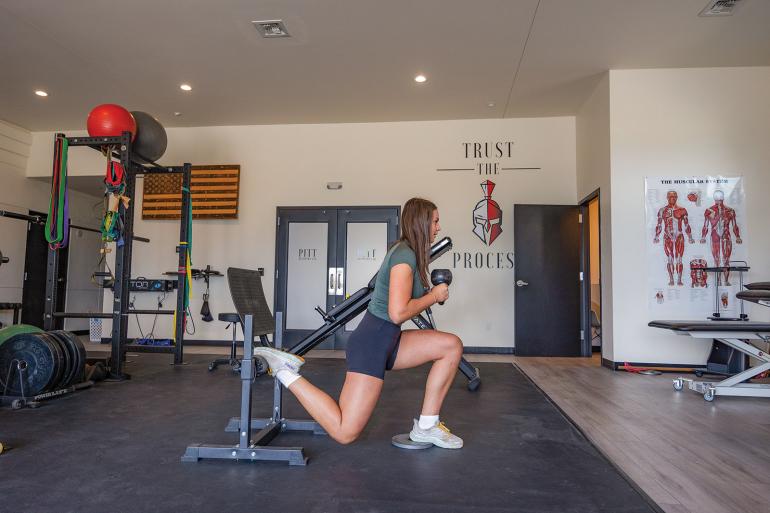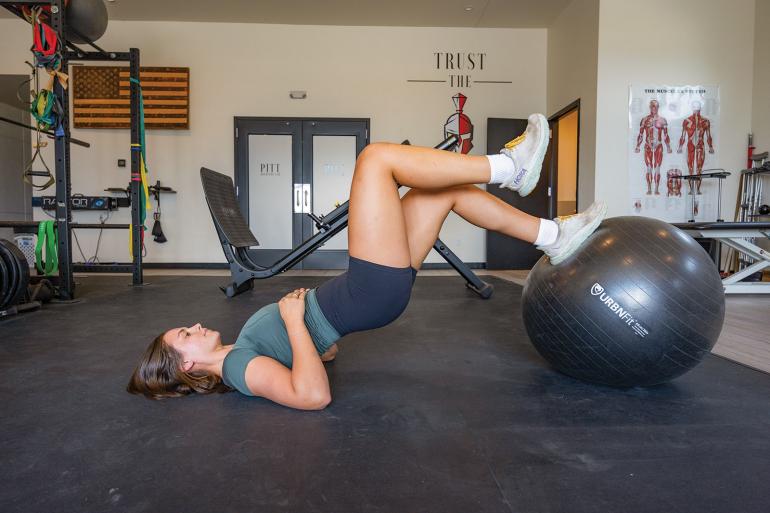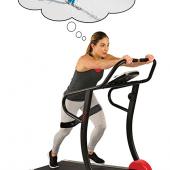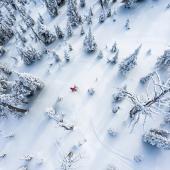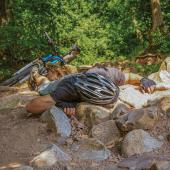Mountain Fit
Pre-season ski & snowboard training.
Ski and snowboard season is almost here. And you’re probably excited—but are you physically prepared? Whether you’re gearing up for your first season or have already purchased your 27th-consecutive Bridger Bowl season pass, this winter will be much more enjoyable and successful with some pre-season training.
Most of us are transitioning to ski mode from a summer of hiking, biking, and fishing—which requires that our bodies adapt to the different demands of winter sports. Without adequate and specific training, we are setting ourselves up for all kinds of injuries that could make for a frustrating winter. Incorporating dynamic warm-ups, strength training, cool-down routines, and static stretching into our fall pursuits will help us remain strong and uninjured for the coming winter. Here are some ways to make the most of the season.
Dynamic Warm-Ups
Back, hips, and legs—these are the key areas to focus on. Spend some time increasing blood flow and mobility by working through a range of motions: deep squats, high-knee marching, butt-kicker walks, grapevine jog, forward or backward lunges, arm circles, and shoulder rolls. These movements help to lubricate joints, and improve tendon and muscle mobility. For strength and stability, do these exercises three to four times per week:
- Heel-elevated Bulgarian split-squats – Place your front-foot heel on a ten-pound plate or decline board. Then place your back foot on a bench or chair. Bend your knees until your back knee almost touches the floor. Repeat for three sets of 8-12 repetitions on each leg. Make this more difficult by adding weight in the hand opposite of the front leg.
- Single-leg Romanian deadlifts – Stand on one leg with the knee slightly bent and a five-pound weight in your opposite hand. Bending at the waist, slowly lower the weight down to the ground, while keeping the planted leg slightly bent. Slowly return to starting position, maintaining core stability and a straight back. Repeat for three sets of 8-12 repetitions on each leg. Add weight to increase intensity.
- Spanish squat isometrics – Place both legs into loops made up by a thick resistance band or strong strap at the level of your knees. Sit back against the band or strap by bending your knees while keeping your lower legs perpendicular to the ground. Try to get to the point where your quads are parallel to the ground. Hold for 30-60 seconds for three sets.
- Ball bridges – Lying flat on the ground with your legs bent to 90 degrees (feet flat on the ball), lift your hips as high as you can without hyperextending your back. Repeat for three sets of 15. For added intensity, perform one leg at a time.
- 90/90 windshield wipers – Lie on your back with your hips and knees both bent to 90 degrees. Rotate to the right approximately 60 degrees (two o’clock), then to the left approximately 60 degrees (10 o’clock). Repeat back and forth 10-20 times. Perform three sets. To make this harder, extend your legs straight as a board.
Stretching
Stretching after exercise reduces injuries in future athletic endeavors. Just 30 seconds of stretching out your lower back, quadriceps, hamstrings, and calves can reduce muscle and joint soreness after the drive home, and will help you recover quickly.
Cross-Training
Finally, utilize other exercise activities to make you a better skier. Yoga, Pilates, rowing, spinning, tai chi, and kickboxing are great. Any alternate form of exercise will help you round out as an athlete, avoid overuse injuries, and keep you going strong.
Good luck this season, and pray for snow.
John-Henry Anderson is a physical therapist at APRS.

